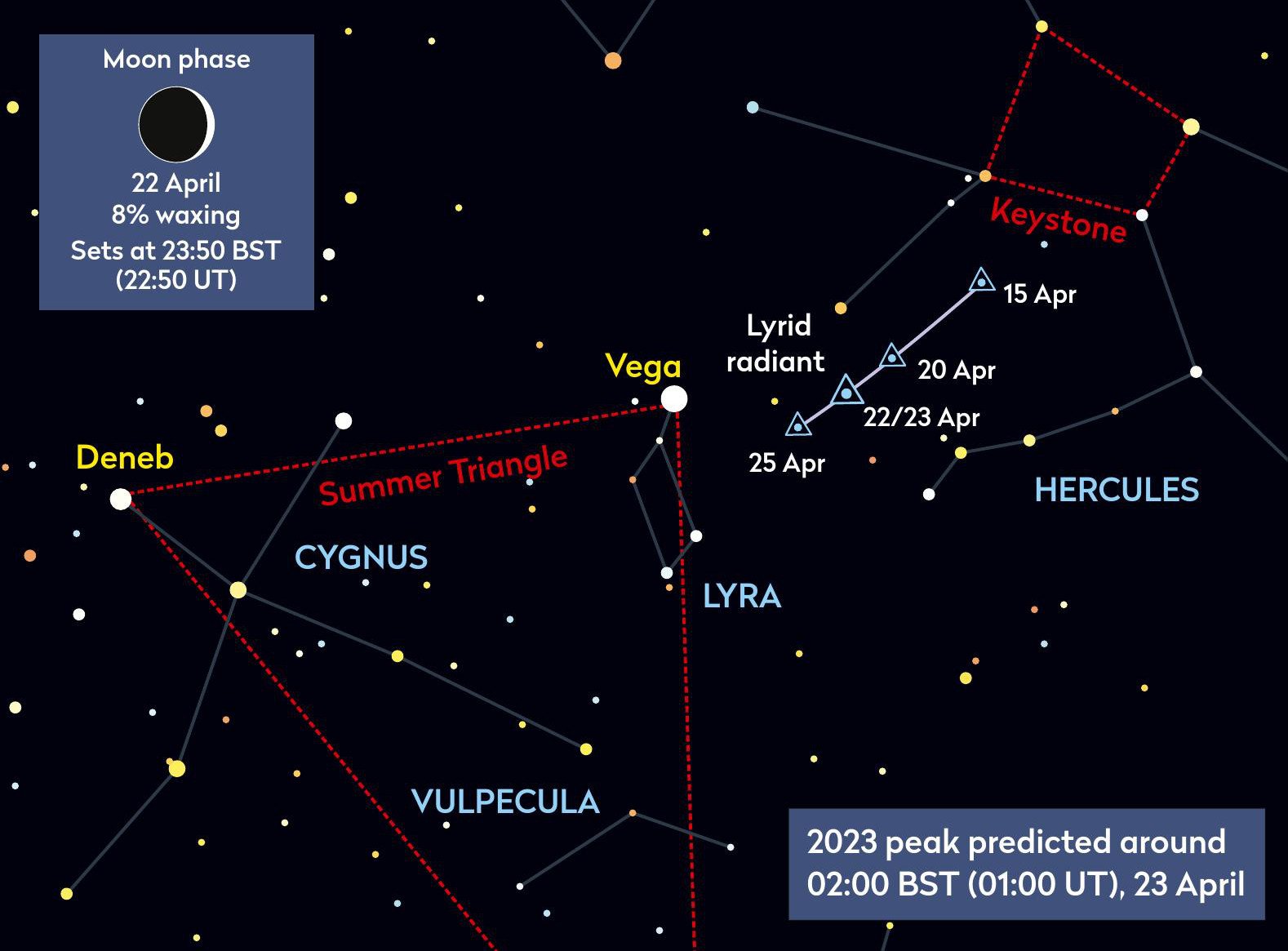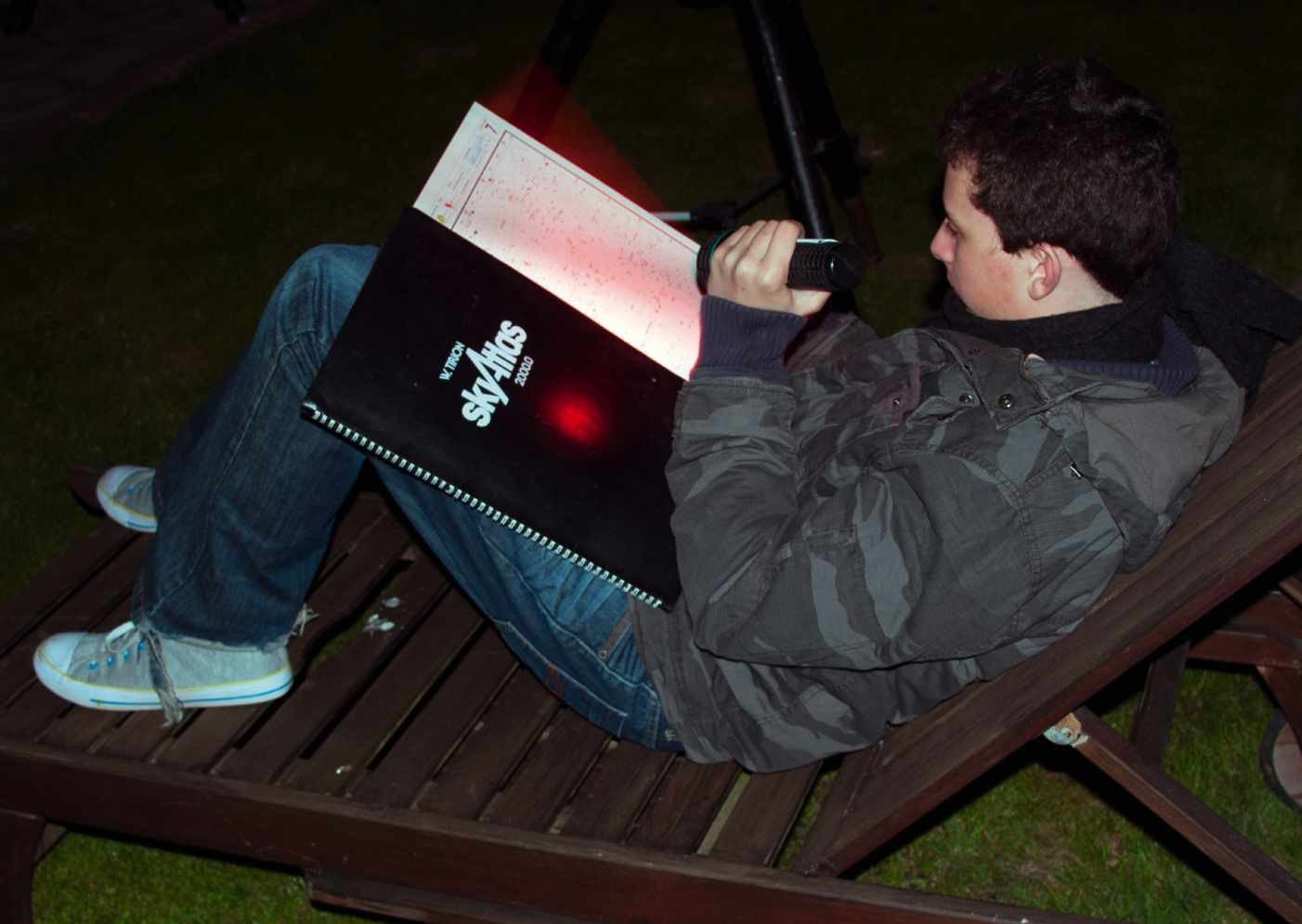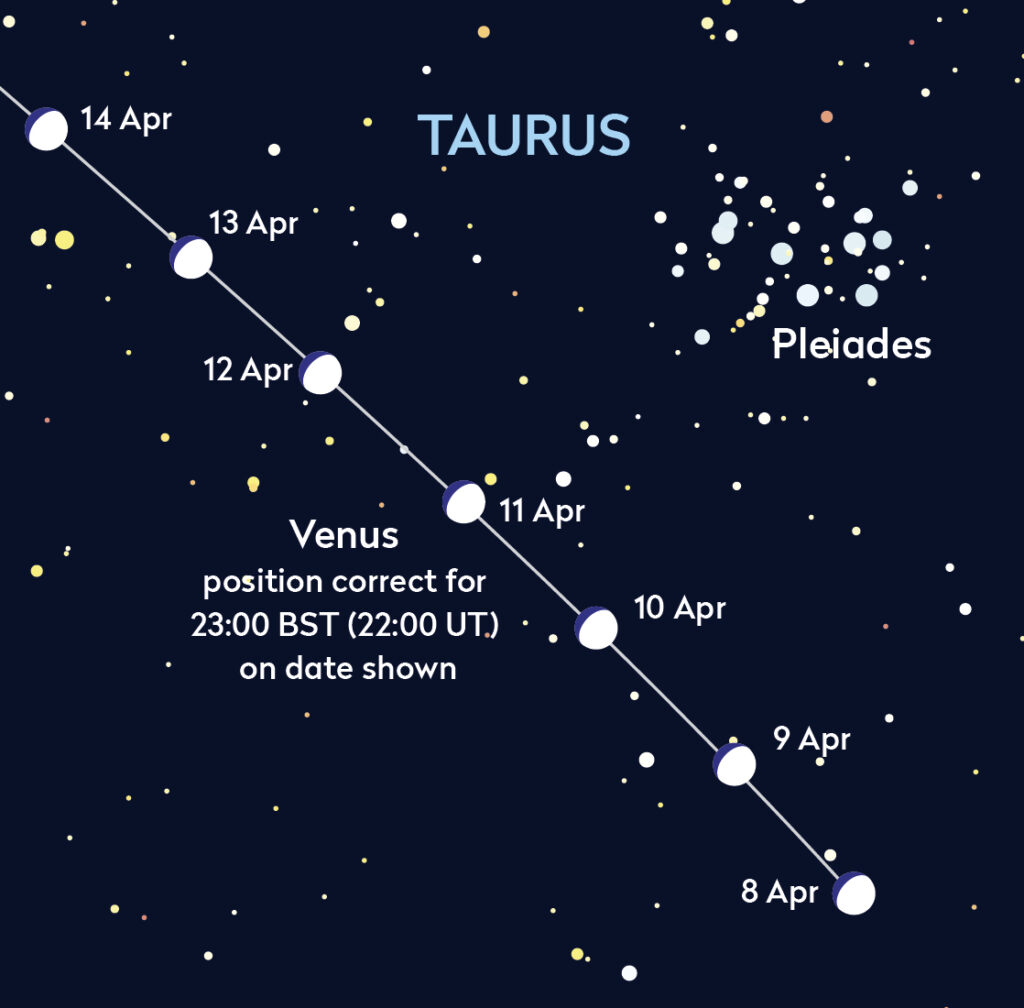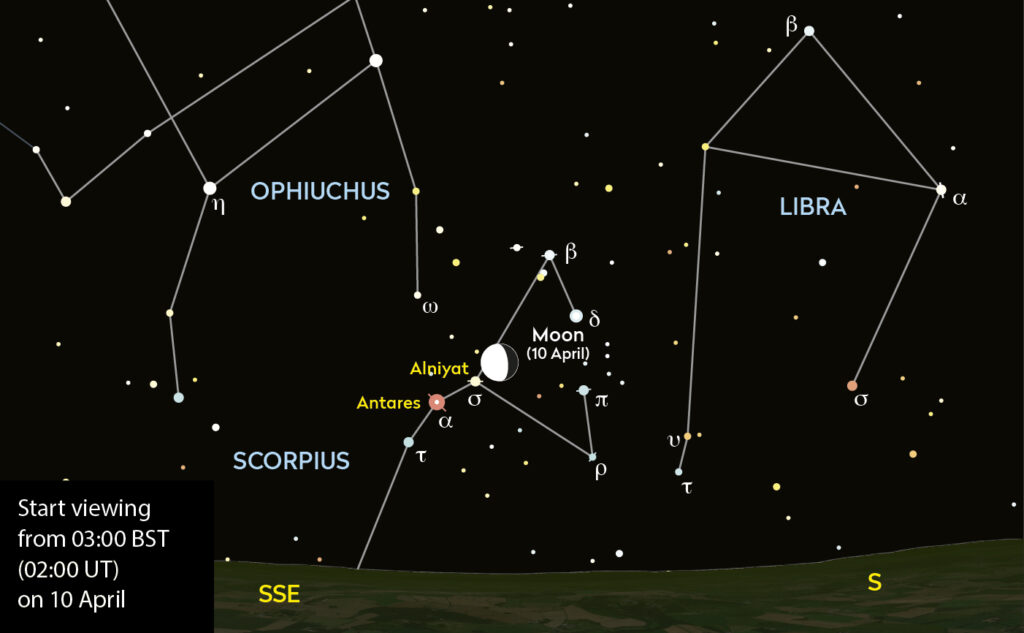The top sights to observe or image this month
DON’T MISS
The Lyrids
BEST TIME TO SEE: 14–30 April, peak on 22/23 April. Darkness between 22:30–03:30 BST (21:30–02:30 UT)
RECOMMENDED EQUIPMENT: Binoculars

This year is looking good for meteor showers, despite getting off to a poor start with an underwhelming showing from the January Quadrantids. That was down to the presence of an almost full Moon around the shower’s peak period.
Meteor showers are awkward in the world of astronomy. Although you can predict with a reasonable degree of accuracy when a shower’s peak period of activity will occur, you cannot specify exactly when and where individual meteor trails will be seen. The number of trails expected during a shower’s peak period is expressed by a quantity known as the Zenithal Hourly Rate (ZHR). This is a value primarily used to compare the activity rates between meteor showers.
The ZHR figure is often misunderstood and needs to be considered in context with local conditions. A ZHR value is calculated by noting the number of shower meteors seen in a set period of time. Shower trails emanate from a small area of sky known as the shower radiant. The ZHR value assumes perfect placement of the radiant, overhead at the zenith. Among other things, it also assumes perfect skies and your ability to see the entire sky in one view. In practice, you’ll be lucky if even one of these conditions is met. As a result, the experienced visual hourly rate (VHR) will be less than the shower’s quoted ZHR.
The VHR isn’t commonly described, for good reason. It varies depending on sky quality, date and time of day. Consequently, it would need to be calculated continually in real time. The Moon has a big effect on a shower’s ZHR to VHR conversion, lowering the VHR considerably. The same occurs when the altitude of the shower radiant drops.

This month sees the peak of the Lyrid meteor shower. Activity occurs between 14 and 30 April, with the peak predicted for the night of 22/23 April. Although the shower has a modest peak ZHR of 18 meteors per hour, it does have a number of factors in its favour.
From the UK, the radiant height approaches 70° just before astronomical darkness ends on 23 April. In addition, the Moon will be new on 21 April and will not interfere. This creates a very favourable situation for 2023’s Lyrid peak.
Lyrid meteors appear to emanate from the radiant position, southwest of bright Vega (Alpha (α) Lyrae). This makes it particularly easy to trace a trail back to see whether it did indeed come from the radiant location. Technically, the radiant sits in Hercules at the time of peak activity.
Venus and the Pleiades
BEST TIME TO SEE: Early evening, 8–14 April
RECOMMENDED EQUIPMENT: Binoculars or small/medium telescope

Venus passes south of the Pleiades during April, creating an opportunity to take a stunning photograph of the bright planet and beautiful open cluster. The best time to see the passage is on the evenings of 8–14 April. Their closest approach occurs on the evenings of 10 and 11 April, when Venus passes 2.7° south of the cluster’s centre. Although the evening twilight expands rapidly throughout April, it should still be possible to see the closest part of this encounter against dark skies, the pair appearing over 10° above the westnorthwest horizon.
Compromised by twilight, the Pleiades is visited by a thin waxing crescent Moon on the evenings of 21 and 22 April. On 21 April, the 3%-lit waxing crescent Moon sits 8.7° below and slightly to the right of the Pleiades as seen from the UK. On the evening of 22 April, the now 8%-lit waxing crescent Moon sits 5.8° east (left and slightly up as seen from the UK) of the cluster’s stars.
During the day on 23 April, the 12%-lit waxing crescent Moon is located 44 arcminutes north of mag. –4.0 Venus, making this a great time to try to find the pair during daylight hours. Their closest approach is around 13:00 BST (12:00 UT), when the pair will be approximately 50° up, above the east-southeast horizon. Although separated from the Sun by just over 40° at this time, great care must be taken to avoid looking at the Sun, either with the naked eye or through widefield instruments such as binoculars. The best and safest strategy is to place the Sun behind something opaque – in other words to stand in the shadow of a building or fence so you can’t see the Sun at all – leaving the area of sky to the left of the Sun in view
Occultation of Alniyat
BEST TIME TO SEE: 10 April, start viewing from 03:00 BST (02:00 UT)
RECOMMENDED EQUIPMENT: Small/medium telescope

On the morning of 10 April, a bright 83%-lit waning gibbous Moon occults mag. +2.9 Alniyat (Sigma (σ) Scorpii). The event starts around 03:33 BST (02:33 UT) when the Moon sits 11° above the southern horizon as seen from central UK, the Moon’s southwest limb hiding the star. Reappearance occurs when the Moon is due south, Alniyat reappearing from the Moon’s dark southeast limb at 04:30 BST (03:30 UT). Times are given for the centre of the UK and may vary by a few minutes depending on location.
Observing lunar occultations of bright stars is rewarding. Watching the star through an eyepiece before disappearance helps you appreciate how fast the Moon’s apparent motion is in the sky. A lunar occultation of a star happens quickly. Lose concentration or blink at the wrong time and the airless Moon and point source star will disappear from view in a lost instant. Reappearance is just as quick, compounded by the doubt that you may not be looking at precisely the correct part of the Moon’s limb to see it.
Alniyat is one of the two stars that flank the bright-red supergiant Antares (Alpha (α) Scorpii). Shining at mag. +1.0, Antares sits 2° to the east-southeast of Alniyat.